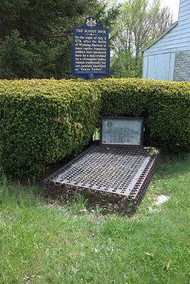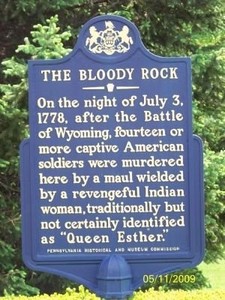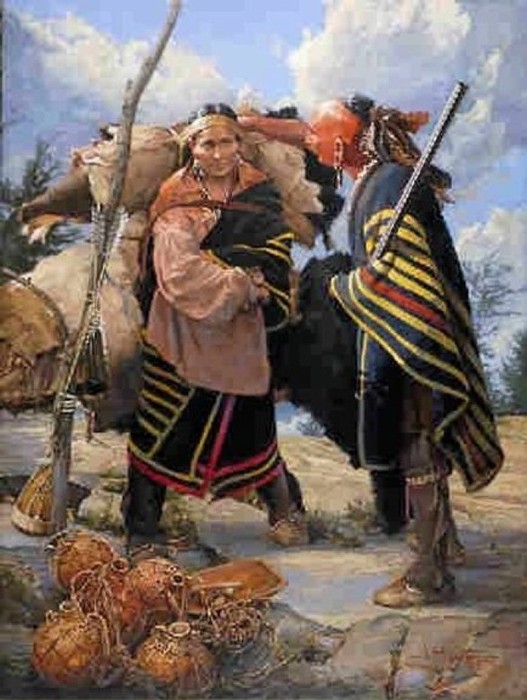The Bloody Rock, Wyoming, Pennsylvania
Introduction
Text-to-speech Audio
Images
The rock now has a small metal cage around it because people were chipping off pieces of the rock for souvenirs

The marker says that "On the night of July 3, 1778, after the Battle of Wyoming, fourteen or more captive American soldiers were murdered here by a maul wielded by a revengeful Indian woman, traditionally but not certainly identified as Queen Esther.

This painting depicting an artist's imagined version of Queen Esther

Backstory and Context
Text-to-speech Audio
Queen Esther was a woman the colonists believed was "royalty" among Native Americans, although there is only hearsay and the testimony of a frightened witness who claims that the prisoners were executed by a maul-wielding Native woman. Among the American residents of the area for years to come, Queen Esther was known as the “Butcher of Wyoming.” Sources also suggest that this woman was peaceful prior to the war and the loss of her son.
The night of the killing commemorated by this monument followed the events of the Battle of Wyoming which is also known as the Wyoming Massacre. The battle took place in July of 1778 in the Wyoming Valley of Pennsylvania and was fought between the Americans and the joint forces of the British and the Iroquois Indians. The Native-British force outnumbered the Americans and demanded that they surrender. The Americans refused and the two sides fought a short battle. The British and Iroquois were winning the fight which led the Americans to attempt a retreat but before they could escape they were flanked by the Iroquois. Dozens of the Americans who escaped were captured and killed at the end of the battle.
Sources
Beatty, Michael. The Bloody Rock. The Historical Marker Database. May 11, 2009. Accessed February 16, 2019. https://www.hmdb.org/marker.asp?marker=18847.
Remsen, Jim. Legend of The Bloody Rock. Jim Remsen Author and Freelance Editor. June 20, 2015. Accessed February 16, 2019. http://www.jimremsen.com/blog.htm?post=1000653.
About Wilkes-Barre PA. Citty of Wilkes-Barre Pennsylvania. . . https://www.wilkes-barre.city/about-wilkes-barre-pa.
Battle of Wyoming Historical Marker. Explore PA History. . . http://explorepahistory.com/hmarker.php?markerId=1-A-17B.
